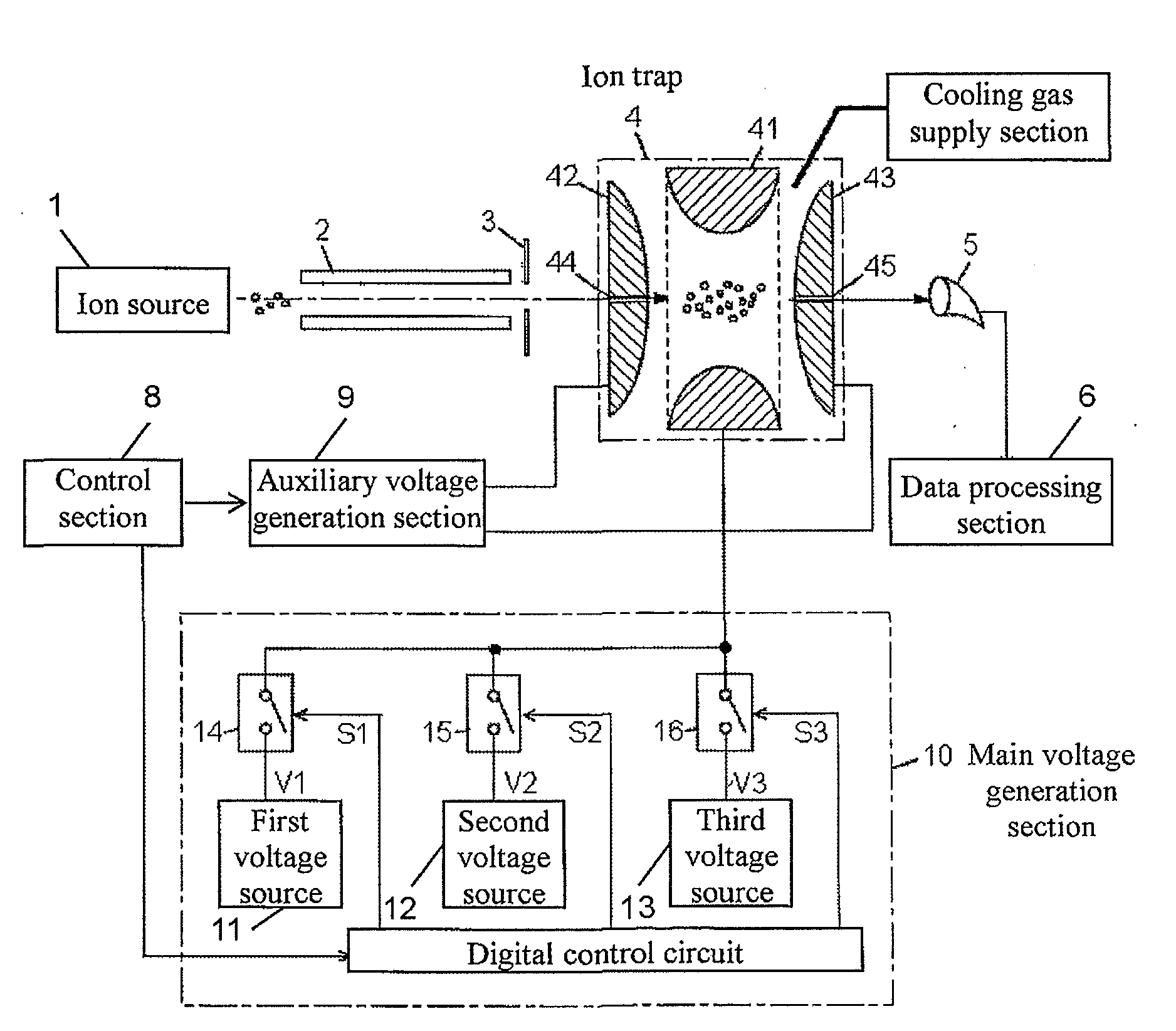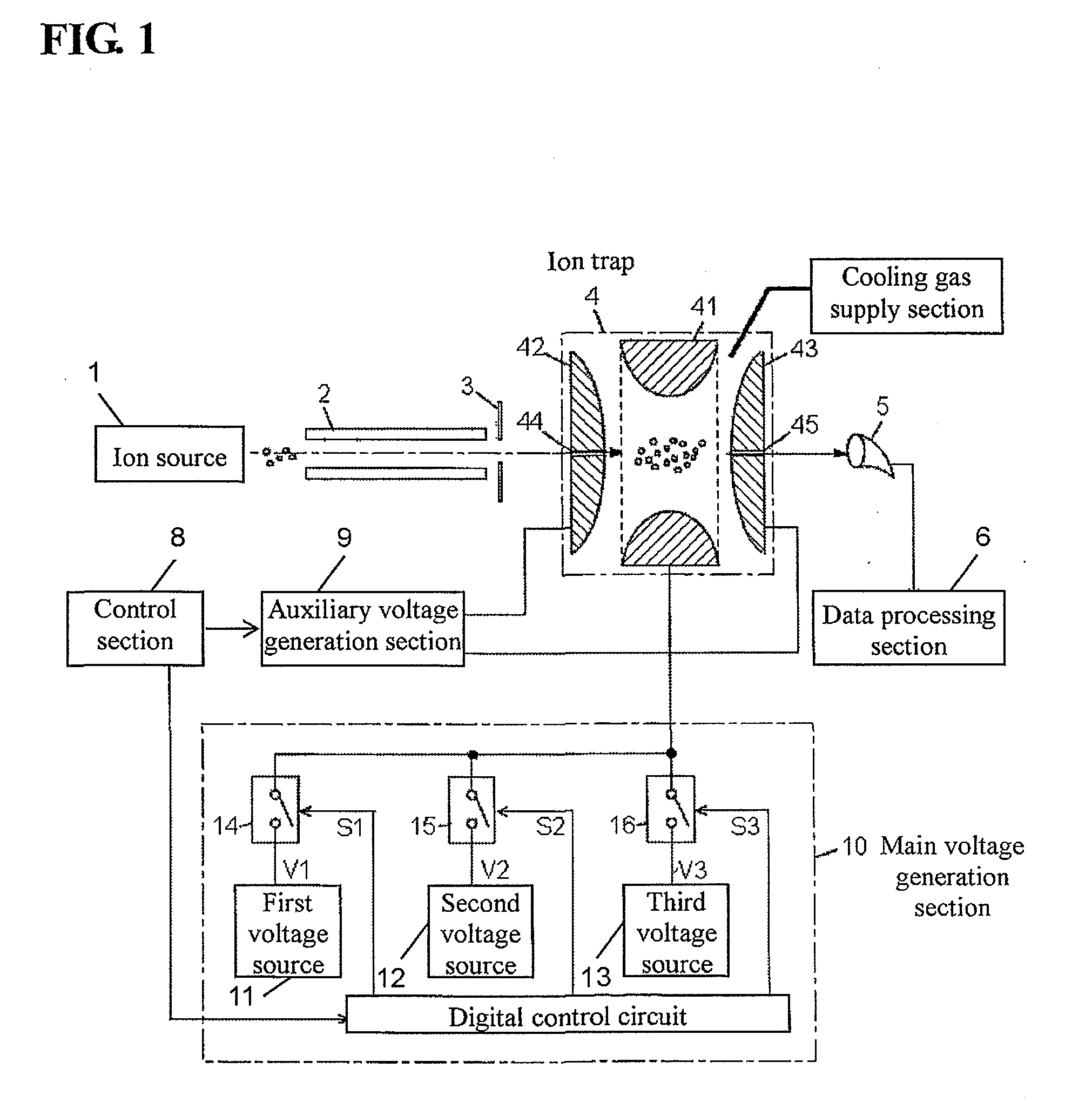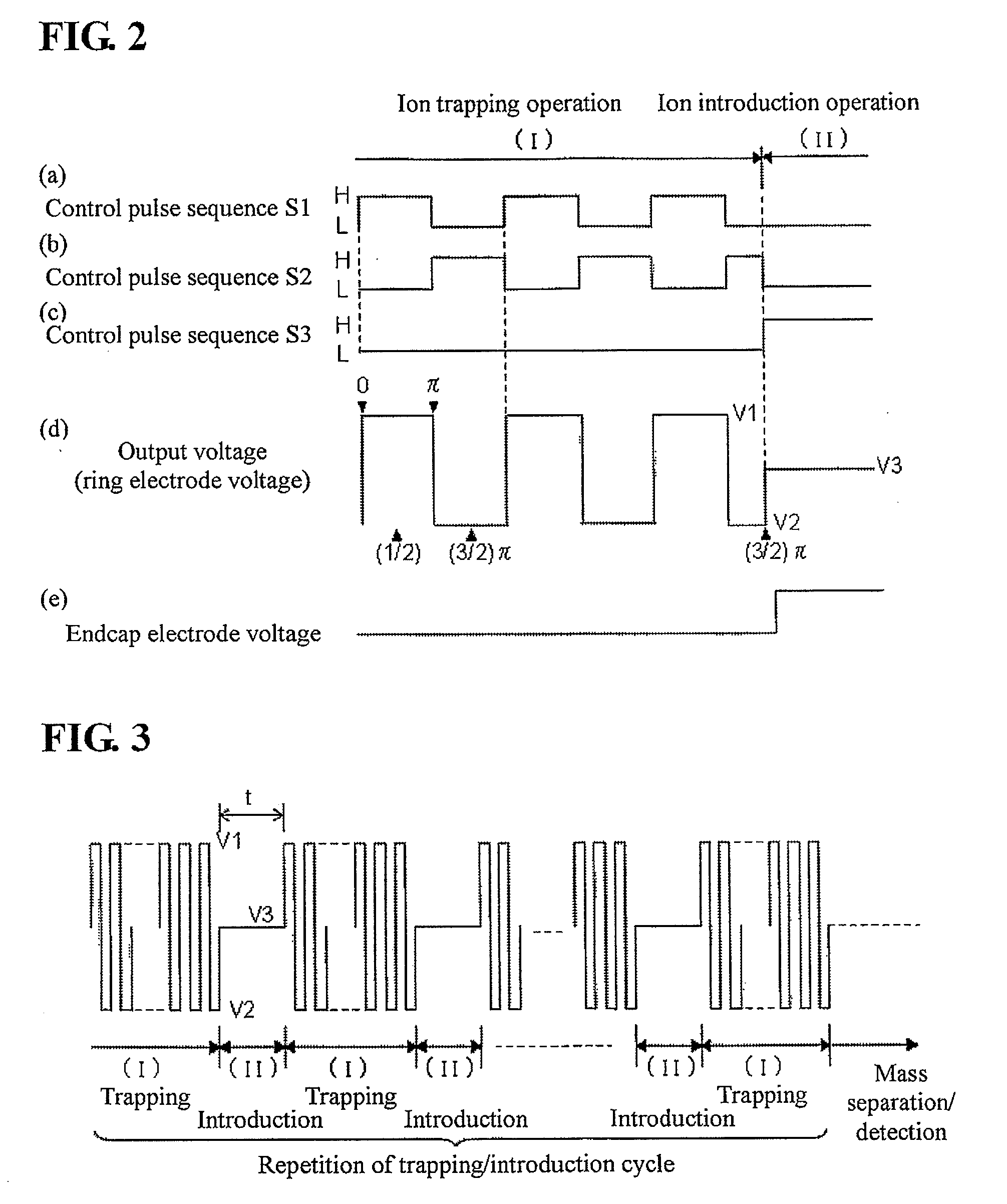Ion trap mass spectrometer
a mass spectrometer and ion trap technology, applied in mass spectrometers, stability-of-path spectrometers, separation processes, etc., can solve the problems of low throughput, low s/n ratio of mass spectrometry analysis, and obtained mass spectrum, so as to increase the probability of allowing ions to be trapped, high signal intensity, and efficient accumulation of ions
- Summary
- Abstract
- Description
- Claims
- Application Information
AI Technical Summary
Benefits of technology
Problems solved by technology
Method used
Image
Examples
Embodiment Construction
[0038]With reference to the drawings, an ion trap mass spectrometer according to one embodiment of the present invention will now be specifically described. FIG. 1 is a fragmentary block diagram showing the ion trap mass spectrometer according to this embodiment.
[0039]The ion trap mass spectrometer comprises an ion source 1, an ion transport optical system 2, a three-dimensional quadrupole ion trap 4, and an ion detector 5. In this embodiment, the ion source 1 is composed of an atmospheric pressure matrix-associated laser desorption / ionization (AP-MALDI) source. Alternatively, the ion source 1 may be composed of another type of atmospheric pressure ion source, or may be composed of an ion source operable to perform ionization under a vacuum atmosphere, instead of under an atmospheric pressure. Ions produced under an atmospheric pressure by the ion source 1 are introduced into a vacuum atmosphere by the configuration of a differential pumping system (not shown), and transported throu...
PUM
 Login to View More
Login to View More Abstract
Description
Claims
Application Information
 Login to View More
Login to View More - R&D
- Intellectual Property
- Life Sciences
- Materials
- Tech Scout
- Unparalleled Data Quality
- Higher Quality Content
- 60% Fewer Hallucinations
Browse by: Latest US Patents, China's latest patents, Technical Efficacy Thesaurus, Application Domain, Technology Topic, Popular Technical Reports.
© 2025 PatSnap. All rights reserved.Legal|Privacy policy|Modern Slavery Act Transparency Statement|Sitemap|About US| Contact US: help@patsnap.com



